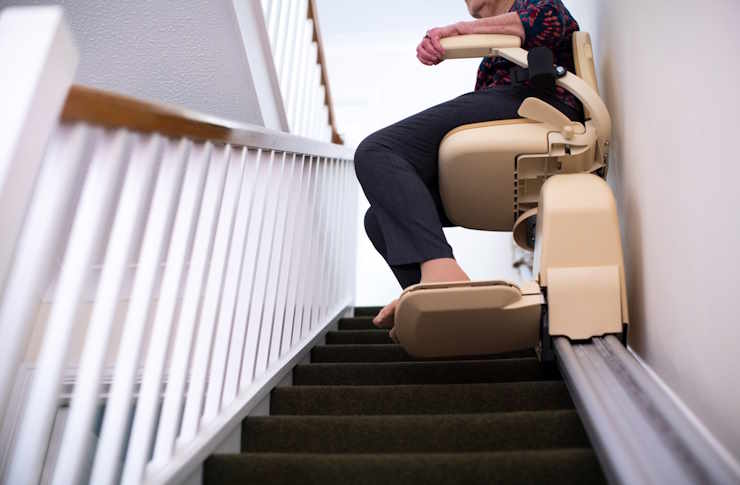Explore helpful tips on fall prevention options for seniors
Falls represent one of the most significant health risks facing older adults today, affecting millions of seniors annually and often leading to serious injuries or reduced independence. Understanding effective prevention strategies can make a profound difference in maintaining safety, mobility, and quality of life. From selecting appropriate mobility aids to making smart home modifications, comprehensive fall prevention involves multiple approaches that work together to create a safer living environment and promote confident movement throughout daily activities.

Explore helpful tips on fall prevention options for seniors
Fall prevention for seniors requires a multifaceted approach that addresses both environmental factors and personal mobility needs. Research shows that approximately one in four adults aged 65 and older experiences a fall each year, making prevention strategies essential for maintaining independence and avoiding serious injuries. Effective fall prevention combines the right equipment, home modifications, and lifestyle adjustments to create a comprehensive safety plan.
Enhance Safety at Home Through Strategic Environmental Changes
Creating a safer home environment forms the foundation of effective fall prevention. Start by improving lighting throughout your living space, ensuring all areas are well-illuminated, especially stairways, hallways, and bathrooms. Install motion-activated lights for nighttime navigation and replace dim bulbs with brighter alternatives.
Remove or secure loose rugs, electrical cords, and other tripping hazards from walkways. Consider installing grab bars in bathrooms near toilets and in shower areas, and add non-slip mats to bathtubs and shower floors. Ensure that frequently used items are stored at accessible heights to avoid the need for step stools or reaching overhead.
Discover Essential Assistive Devices for Improved Mobility
Mobility aids play a crucial role in fall prevention by providing additional stability and support during movement. Walking aids range from simple canes to more advanced mobility devices, each designed to address specific needs and mobility levels.
Standard canes work well for individuals who need minimal support and have good upper body strength. Four-wheeled rollators offer more stability and often include seats for resting, making them ideal for longer distances. Two-wheeled front-wheel models provide a middle ground between stability and maneuverability.
When selecting mobility aids, proper fitting is essential. The device should allow for a slight bend in the elbow when standing upright, and the height should be adjustable to accommodate different users or changing needs over time.
Implement Practical Home Modifications for Long-term Safety
Beyond basic safety measures, consider more substantial home modifications that can significantly reduce fall risks. Installing handrails on both sides of staircases provides crucial support, while adding ramps can eliminate the need to navigate steps entirely.
Bathroom modifications often provide the greatest safety improvements. Consider installing a walk-in shower or tub, raised toilet seats, and shower chairs. These modifications allow seniors to maintain personal hygiene independently while reducing slip and fall risks in wet environments.
Bedroom and living area modifications might include adjusting bed height for easier transfers, ensuring adequate lighting near light switches, and creating clear pathways between frequently used areas.
Adopt Daily Habits for Stability and Strength
Physical conditioning plays a vital role in fall prevention. Regular exercise programs focused on balance, strength, and flexibility can significantly reduce fall risk. Simple activities like tai chi, yoga, or balance-specific exercises can improve stability and coordination.
Establish consistent daily routines that promote safety awareness. This includes wearing appropriate footwear with good traction, taking time to adjust when changing positions, and avoiding rushing through daily activities.
Regular health check-ups help identify and address factors that might increase fall risk, such as vision problems, medication side effects, or balance disorders. Maintaining proper nutrition and hydration also supports overall strength and cognitive function.
Gain Confidence in Movement Through Proper Equipment Selection
Choosing the right mobility equipment can significantly impact confidence and safety. Different types of mobility aids serve various needs and preferences, and understanding these options helps in making informed decisions.
| Product Type | Provider | Key Features | Cost Estimation |
|---|---|---|---|
| Standard Cane | Drive Medical | Adjustable height, lightweight aluminum | $15-$30 |
| Quad Cane | Hugo Mobility | Four-point base, enhanced stability | $25-$45 |
| Two-Wheel Rollator | Medline | Front wheels, hand brakes, foldable | $60-$120 |
| Four-Wheel Rollator | Drive DeVilbiss | Seat, storage basket, hand brakes | $80-$200 |
| Upright Walker | NOVA Medical | Ergonomic handles, forearm support | $150-$300 |
Prices, rates, or cost estimates mentioned in this article are based on the latest available information but may change over time. Independent research is advised before making financial decisions.
Proper training in using mobility aids ensures maximum benefit and safety. Many healthcare providers offer instruction on proper techniques, and some medical supply companies provide demonstrations when purchasing equipment. Regular maintenance and inspection of mobility aids help ensure continued safety and effectiveness.
Fall prevention for seniors requires ongoing attention and adjustment as needs change over time. By combining appropriate assistive devices, home modifications, and healthy lifestyle habits, seniors can maintain their independence while significantly reducing their risk of falls. The key lies in taking a proactive approach that addresses multiple risk factors simultaneously, creating a comprehensive safety strategy that evolves with changing needs and circumstances.
This article is for informational purposes only and should not be considered medical advice. Please consult a qualified healthcare professional for personalized guidance and treatment.


